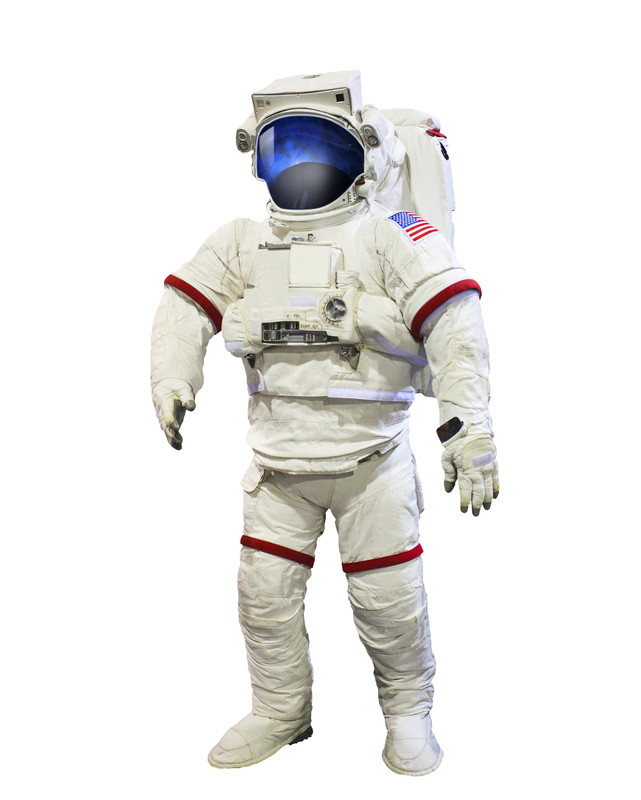An Odd Partnership
As the United States worked tirelessly towards the goal of putting a man on the moon, there was one area that was a particular struggle. NASA was used to working with hardware – big, powerful rocket engines, developing new technology to generate power, to keep the astronauts alive, and build piping, switching, and electrical components that had never existed previously. So they were used to dealing with ‘hard stuff’ like metal, ceramics, and wire.

But a big question was going to be how to keep an astronaut alive on the surface of the moon. At this point, the suits the astronauts wore were really just a growth of flight suits, and were really just a secondary protection in case something happened to the pressurized capsule. A moon suit, on the other hand, had to literally be like a little self-contained spacecraft that was worn by the astronaut.
I’ve been to Kennedy Space Center and seen the exhibits of some of the prototype suits. Some of them were ‘hard’ suits – made almost entirely out of metal, jointed to allow the occupant to rotate or move, after a fashion, but obviously extremely limited in flexibility. There were rubberized suits as well, but the problem was as soon as they were pressurized, the internal pressure made it extremely difficult for the astronaut to bend and move.
So, NASA put it out for bid and asked for contractors to build a new space suit. Naturally, there were a number of military and defense contractors who jumped into the fray, but there was one commercial, consumer manufacturer that ended up getting the contract.
They specialized in flexible, rubberized or coated garments, but many people don’t know that the original NASA moon suits were built by a company named ILC (International Latex Corporation). Most people would know them by their consumer name, Playtex. Yes, the company that revolutionized women’s undergarments were taking the lead on building the new space suit.
However, NASA felt they had to hedge their bets. Playtex was a consumer-oriented enterprise, and had not been involved in government contracts. So, in addition to Playtex, NASA selected Hamilton Standard as a partner, with the thought they could better manage the process. Hamilton Standard was best known for being one of the primary suppliers of propellers for military aircraft going back to before WWII.
It was a marriage made in hell. The two companies had completely different cultures and the clash was almost instantaneous. They could not come together on how to best progress the project, and the problems soon became clear to NASA. Deadline after deadline was missed, or the delivered product was simply not acceptable. After a few years of trying, NASA took the drastic step of cancelling the contract.
ILC continued to work on the project, and when NASA later re-opened the bidding, they were ready with a new proposal. This time, they were selected without the oversight of Hamilton Standard. However, they did have to continue working with their former partner, as ILC had the contract for the suit, and Hamilton Standard received the contract for the environmental control system (the backpack that contained the systems to keep the astronaut cool and breathing).
The rest is history. Playtex used their experience with making flexible clothing and built a suit that was perfect for the moon. It has sixteen layers, from a base under-suit with a cooling layer, the pressure suit, and the final white over-suit made from a new, extremely durable material called beta cloth. The gloves were made of a material called Chromel-r, which was a woven metal cloth that cost $50,000 per yard!
I’ve always loved this story. While few of us will ever work on projects the likes of Apollo, we’ve all probably had experiences with conflict on the project team. Sometimes, as shown by the space suit saga, the only resolution is to change the team. People who may have a hard time working together on the same team may work very well together on separate teams with a common goal. There can really only be one leader, in the sense that there should only be one person that can give a ‘go/no go’ answer to resolve conflict and move the project forward.
What lessons do you see in this space suit saga?
For a great documentary series on the development of the NASA moon suit, check out Moon Machines: The Space Suit.
This was a fascinating story. The author of this blog and I are personal friends with the son of one of the Grumman engineers who designed the LEM (Lunar Excursion Module). Our friends father also worked onb the design of the -14 Tomcat landing gear, surely one of the strongest LG systems ever devised!